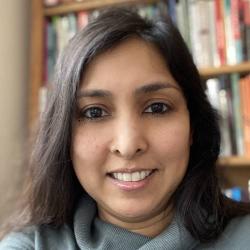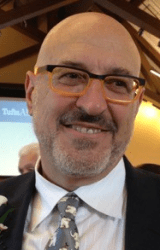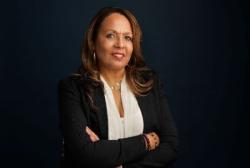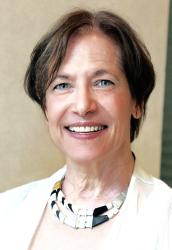She can speak. She just talks differently.
Jamal Berry - CEO, Educare DC
Every child has a superpower. Yet, those with disabilities often do not have full access to quality education and other services that would enable them to use their superpower to positively and fully contribute to society. A recent workshop on inclusion in early childhood, held as part of the Center for Universal Education’s symposium on education systems transformation for and through inclusive education, asked whether focusing on the early years of a child’s life might offer a window of opportunity to catch, remedy, and maybe even reverse a child’s development trajectory so all countries can reach the Sustainable Development Goals (SDGs). It brought together early childhood development (ECD) and inclusion experts and those who wanted to learn more about the topic. Two key messages emerged from participants: every child matters, and early means early. Participants also suggested that the global community needs to develop a global disability-focused ECD strategy and that governments should allocate at least 3% of education budgets for children with disabilities.
Children with disabilities are not a monolith and vary greatly in the challenges they experience and their abilities to fully and positively contribute to society. Some have physical, mental, social, or sensory impairments while others have a combination of multiple challenges. Globally, it is estimated that 15% of the world population, about 1 billion people, live with some type of disability. UNICEF estimates that about 1 in every 10 children has at least one disability, with children from South Asia, East Asia, and West and Central Africa having higher incidences. Moreover, globally, almost 53 million children under the age of 5 have developmental disabilities, and many others live with hidden disabilities that may go unnoticed and, therefore, unrecorded.
The global Convention on the Rights of the Child and the U.N. Convention on the Rights of Persons with Disabilities (CRPD) articulate the rights and equal treatment of children with disabilities. The CRPD provides a comprehensive international legal framework for the education rights of children with disabilities that has been ratified by 181 countries. These legal frameworks and the SDGs are resolute in leaving no one behind. Despite these legal frameworks, agreements, and aspirations, there are numerous challenges and insufficient investment for disabled children to enjoy full rights to education, health, and well-being. In most countries, children with disabilities face stigma and discrimination from their own governments, communities, and families. Their complex needs are often not included in policy and investment discussions. Investment in this cohort of children is usually not high on the policy or financing agenda, yet we know that increased investment and support for children with disabilities can accelerate countries’ paths to achieving the SDGs, particularly SDG 4.2. From 2007 to 2016, disability funding declined by 11.4% worldwide, and only 2% of the estimated $79.1 million invested in early childhood development was spent on young children with disabilities. Tim Shriver, Special Olympics’ Board Chair, maintains that if governments could commit even 3% of their overall education budgets to the inclusion of children with disabilities in existing classrooms, it could impact their abilities to thrive and contribute to our societies.
2 key messages
Every child matters
All of society benefits when all children are uplifted. For the early childhood sector, that means developing inclusive classrooms that use a twin-track approach and Universal Design for Learning (UDL) Instruction. Using this method, rather than having separate classrooms for children, disability-focused support is provided in classrooms that focus on equity for all, but also provide specific support for those with disabilities. Research indicates that this approach benefits all children; children with disabilities have better developmental outcomes (for example, language, social and academic skills, better behaviors), and typically developing children have increased empathy, tolerance, skills in sign language, and more. Establishing inclusive classrooms also requires investment in upskilling classroom teachers so they can support children of all abilities while working with special education teachers. These interventions cost money, yet exclusion has greater negative costs to society in reduced national GDP and higher spending for remedial programs, to name a few. It is estimated that the annual economic cost to society when a disabled child is not able to attend school or get a job can be high—more than 1% of GDP in some cases.
Early means early
The first five years of life are crucial periods of brain growth and development where about 90% of new neural connections (about 1 million neural connections per second) are made. After around 30 months of life, the brain’s ability to change in response to experiences requires greater effort than before this period. Since the brain is very malleable during this phase, evidence suggests that early screening, referrals, and intervention can halt, improve, and completely change the course of a child’s developmental trajectory. As children are mostly with parents and caregivers during the earliest months of life, investing in their ability to support their children can be important. Often support for parents and caregivers to aid their children is unavailable in communities or unaffordable. Research comparing urban and rural children’s access to early childhood education found that those with access to support before age 5 (mostly in urban areas) had higher academic achievement. For children with autism, research indicates that early intervention can greatly ameliorate symptoms, putting children closer to the development trajectory of those without autism.
The way forward
Supporting children with disabilities is complex as their needs span multiple government and sectoral departments, there are finite resources in all government budgets, and underlying societal discrimination, even subtle, remains strong throughout the world. Yet, workshop participants suggested that supporting every child and doing so early provides the best chance for countries to meet the SDGs. Two suggested actions for supporting every child early that emerged from the workshop and recent literature include:
- Establish a global, disability-focused ECD strategy: Global goals and road maps such as the SDGs, Nurturing Care Framework (NCF), and others include young children with disabilities yet provide inadequate strategy and concrete actions for how to ensure full rights and support for young children with disabilities. Thus, a strategy resulting from action by multiple sectors that complements the NCF is one agenda for progress.
- Allocate at least 3% of education budgets for children with disabilities: Increasing investment will allow more to be done to support children with disabilities. These could focus on:
- Supporting inclusive preschool classrooms that implement a twin-track approach and universal design for learning
- Upskilling teachers that lead inclusive classrooms
- Parental support so they have increased knowledge and skills to support their children
- Strengthening early screening and referral systems
- Research focused on young children with disabilities
Workshop participants were ready to join hands and tackle this complex challenge and suggested that commitment from stakeholders, including governments, donors, and families will be critical to light a path towards achieving the Sustainable Development Goals and ensuring a thriving society.







Commentary
Including young children with disabilities lights a path toward achieving the Sustainable Development Goals
July 24, 2024